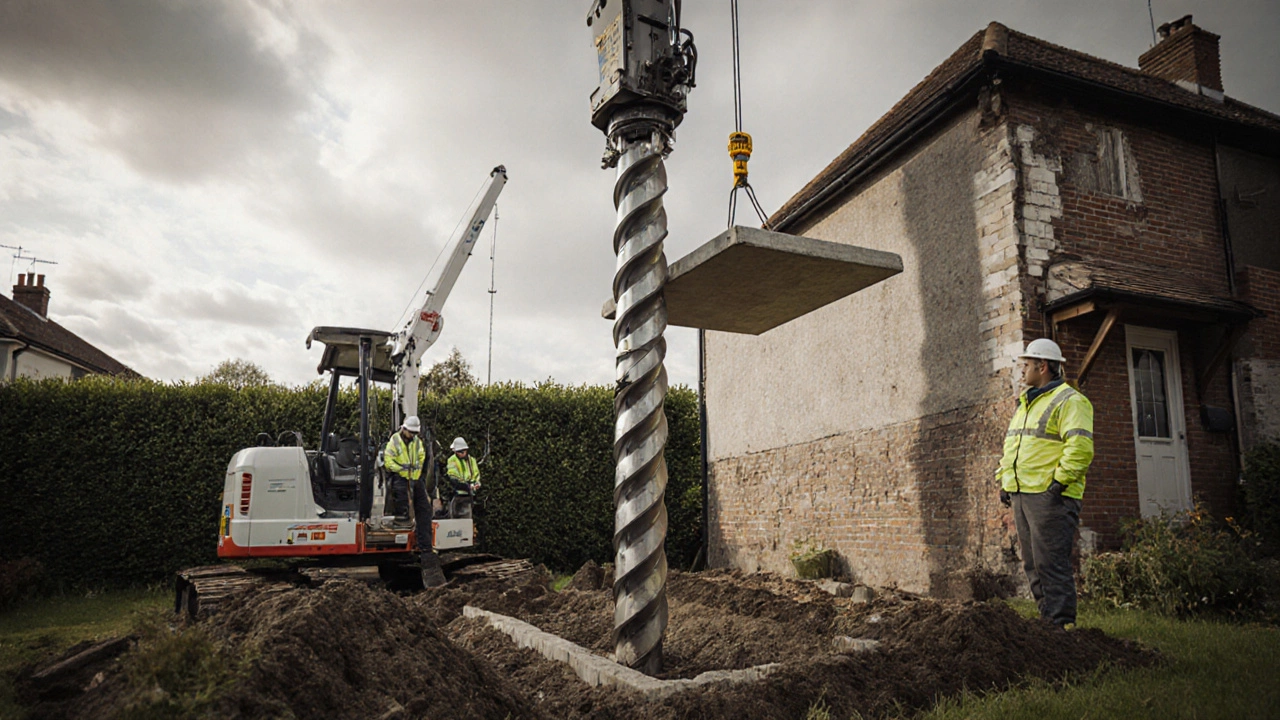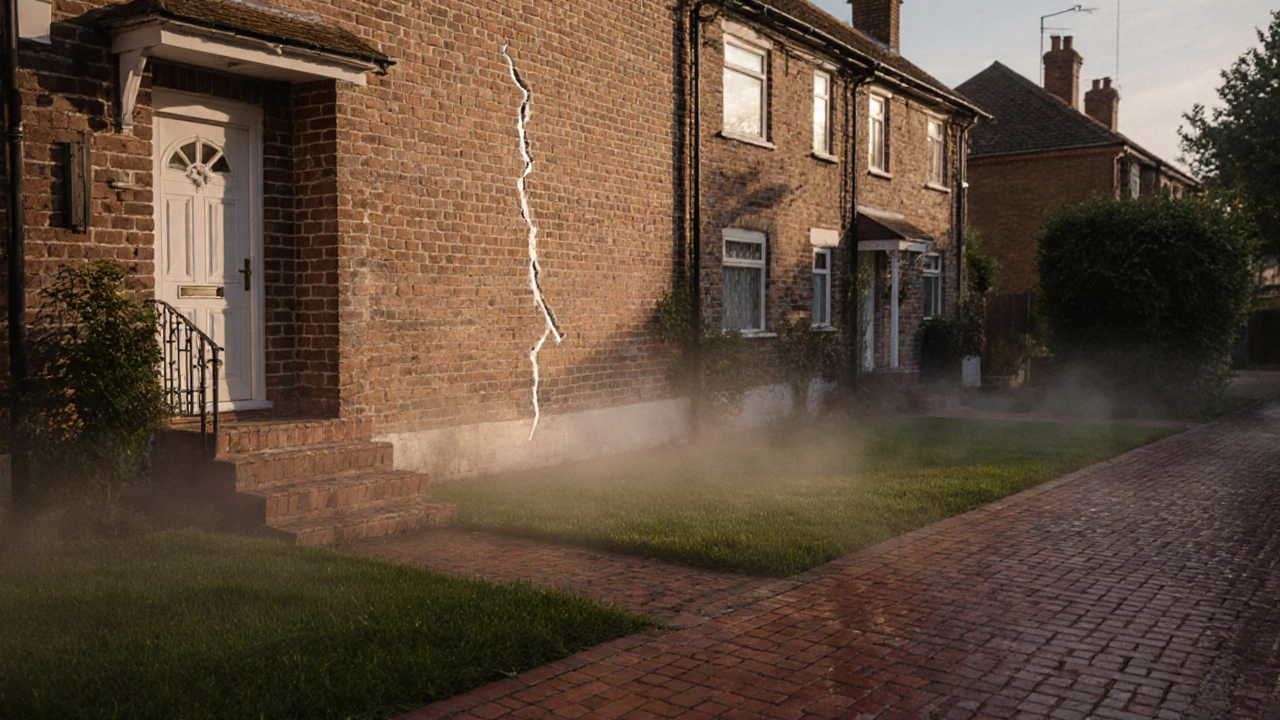Foundation Problem Checker
This interactive tool helps you assess potential foundation issues by answering a few key questions about your home's condition.
When the house starts making groaning noises or the doors begin to stick, most homeowners blame the weather or age. But what if the culprit is deeper-literally? foundation issues can sneak up on you, turning a cozy home into a costly nightmare. Below is a practical guide that helps you spot the warning signs before they become expensive repairs.
Key Takeaways
- Uneven floors, cracked walls, and sticking doors are common red flags.
- Check for moisture, soil movement, and visible cracks around windows and the foundation.
- Simple DIY tests can reveal settlement, but a structural engineer is a licensed professional who assesses load‑bearing elements and recommends remediation should verify serious concerns.
- Address drainage, trees, and load distribution early to prevent future problems.
Visual Clues You Can’t Ignore
Even if you’re not a contractor, you can spot a few tell‑tale signs from the ground up. Look for these clues around the exterior and interior of your property.
- Foundation cracks appear as linear or stair‑step fractures in the concrete that are wider than ¼ inch.
- Gaps between the basement wall the vertical structure that retains earth pressure in below‑grade spaces and the floor slab.
- Doors and windows that jam or leave uneven gaps when closed.
- Sloping or “bouncy” floors, especially in rooms with heavy furniture.
- Water pooling near the footings the widened part of the foundation that spreads load to the soil after rain.
DIY Tests to Confirm Settlement
If the visual cues raise suspicion, a quick do‑it‑yourself test can help you decide whether to call in an expert.
- Measure a doorframe: Use a level or a simple string with a weight. If the frame is out of plumb by more than ¼ inch, settlement is likely.
- Check for a “step” in the floor: Place a straight 2‑meter board on the floor. Gaps under the board signal unevenness.
- Inspect the slab foundation a flat concrete base that supports the structure directly on the ground for cracks that follow a horizontal pattern.

When to Call a Professional
Some signs can’t be safely evaluated without the right eyes. Contact a licensed structural engineer who can perform load calculations, soil analysis, and detailed inspections if you notice any of the following:
- Cracks that are wider than ½ inch or that continue to grow.
- Significant sagging of floors or ceilings.
- Moisture accumulation inside the crawlspace the shallow area beneath a home that provides access to plumbing and HVAC that leads to mold.
- Visible movement of the pier and beam a foundation system using concrete piers and wooden beams to support a home structure.
Common Causes Behind Foundation Problems
Understanding why foundations fail helps you target the right fix.
| Cause | Resulting Symptom |
|---|---|
| Excess moisture intrusion water seeping into foundation soils and cracks | Expanding soil pushes walls outward, leading to cracks. |
| Soil movement expansion, shrinkage, or erosion caused by moisture changes | Uneven settling, especially after drought or heavy rain. |
| Tree roots | Undermining footings, creating gaps and cracks. |
| Improper drainage lack of gutters, downspouts, or French drains | Water pools near foundation, increasing hydrostatic pressure. |
| Overloaded load‑bearing walls walls that carry structural weight beyond design limits | Cracking and bowing of walls. |
Remediation Options at a Glance
Fixes range from low‑cost adjustments to full‑scale reconstruction. Choose based on severity, budget, and long‑term plans.
- Water management: Install proper gutters, downspouts, and a sump pump a device that removes accumulated groundwater from basements to keep soil dry.
- Soil stabilization: Use helical piers or concrete piers to lodge foundations deeper into stable soil layers.
- Crack injection: Epoxy or polyurethane injections seal foundation cracks to restore structural continuity when movement is minimal.
- Wall reinforcement: Carbon fiber straps or steel plates strengthen bowed basement walls the below‑grade structural elements.
- Full underpinning: When settlement is severe, excavate and rebuild footings to new depths.
Prevention Tips to Keep Your Home Stable
Stopping problems before they start saves both money and stress.
- Maintain a uniform landscape grade: Keep soil sloping away from the house.
- Trim large trees at least 6‑8 feet from the foundation to limit root intrusion.
- Inspect and clean gutters twice a year to avoid overflow.
- Check your sump pump at least annually and after heavy storms for proper operation.
- Monitor interior humidity; aim for 30‑50% to reduce soil moisture fluctuations.

Frequently Asked Questions
What size crack indicates a serious foundation problem?
Any crack wider than ½ inch, especially if it is horizontal or stair‑step, should be evaluated by a structural engineer. Even smaller cracks can signal trouble if they continue to widen over time.
Can I fix foundation cracks myself?
Minor vertical cracks can be sealed with epoxy kits, but they only address the symptom, not the cause. Structural movement requires professional remediation.
How much does foundation repair typically cost in New Zealand?
Costs vary widely. Simple drainage solutions may start around NZ$3,000, while full underpinning can exceed NZ$30,000. Getting multiple quotes from licensed contractors is essential.
Will insurance cover foundation repairs?
Standard home insurance rarely covers damage caused by soil movement or poor maintenance. However, sudden events like earthquakes may be covered if you have the appropriate rider.
Is it safe to live in a house with minor foundation cracks?
Most small, stable cracks do not pose an immediate safety risk, but they should be monitored. Regular inspections help ensure they don’t develop into larger issues.
Detecting foundation issues early gives you the leverage to choose the right repair path and protect your home’s value. Stay observant, keep moisture under control, and don’t hesitate to bring in a qualified professional when doubts arise.

Author
Damon Blackwood
I'm a seasoned consultant in the services industry, focusing primarily on project management and operational efficiency. I have a passion for writing about construction trends, exploring innovative techniques, and the impact of technology on traditional building practices. My work involves collaborating with construction firms to optimize their operations, ensuring they meet the industry's evolving demands. Through my writing, I aim to educate and inspire professionals in the construction field, sharing valuable insights and practical advice to enhance their projects.